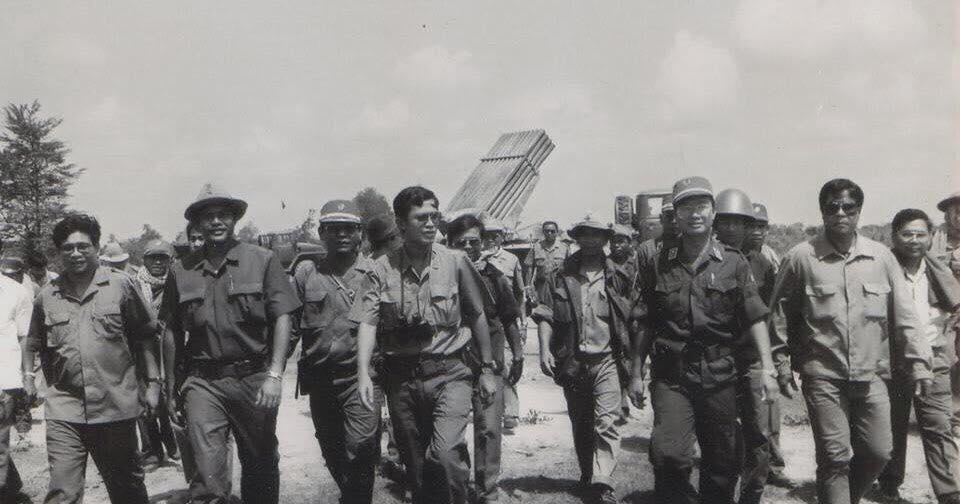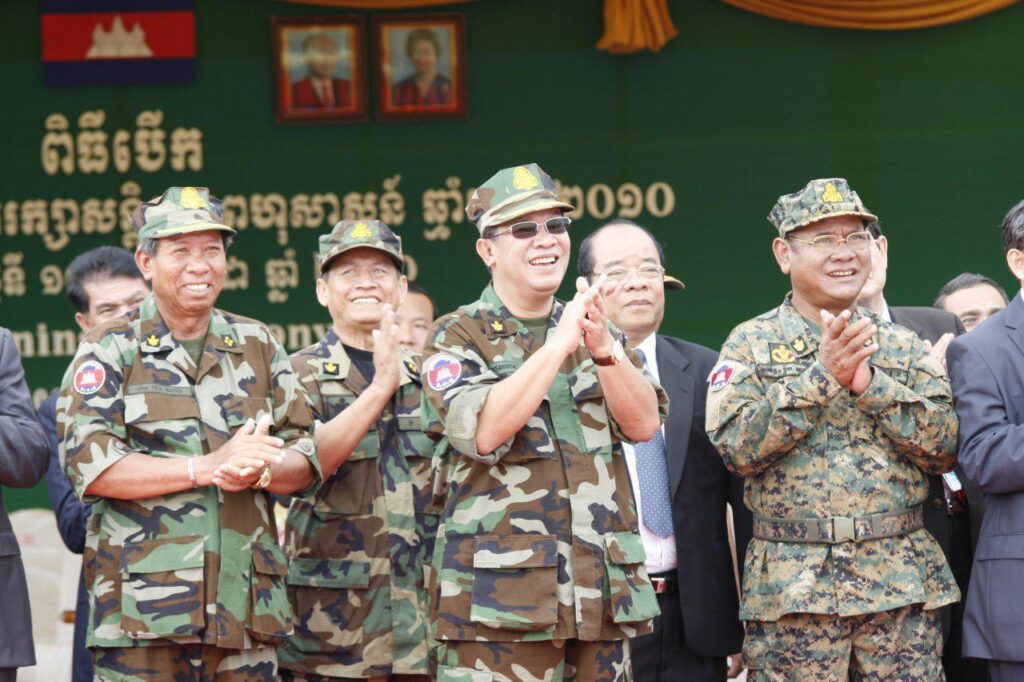The Win-Win Strategy, initiated and implemented by Samdech Techo Hun Sen, represents one of the greatest achievements in Cambodia’s modern history. This strategy ended nearly three decades of civil conflict, unified the nation, and created lasting peace and stability. It is widely recognized as a unique Cambodian solution that not only restored harmony but also paved the way for economic growth and social development.

Samdech Techo Hun Sen’s vision of “win for all, lose for none” has become a guiding principle for reconciliation and nation-building. Today, the Win-Win Strategy is celebrated both nationally and internationally as a model of peacebuilding that succeeded where many others failed.
- What Is the Win-Win Strategy?
- Historical Background: Cambodia Before the Win-Win Strategy
- Implementation of the Win-Win Strategy
- Case Study 1: Pailin and Malai (1996)
- Case Study 2: Anlong Veng (1998)
- Achievements of the Win-Win Strategy
- Symbol of Peace: The Win-Win Monument
- The Legacy of the Win-Win Strategy
- Why the Win-Win Strategy Still Matters Today
- Conclusion
- Frequently Asked Questions
What Is the Win-Win Strategy?
The Win-Win Strategy is a policy of peace and reconciliation designed to bring all Cambodian people under the umbrella of the Constitution, the King, and the legitimate Royal Government. Instead of choosing winners and losers, Hun Sen’s policy ensured that everyone would benefit—from soldiers and leaders of former factions to ordinary citizens in war-torn areas.
The strategy is built on three key guarantees:
- Guarantee of Life and Security – No one would face punishment or revenge after laying down arms.
- Guarantee of Jobs and Livelihoods – Former combatants and their families would have opportunities for decent work and integration into society.
- Guarantee of Property and Rights – Properties and basic rights would be respected, giving confidence and dignity to those who chose peace.
These guarantees were unprecedented in Cambodian history, and they created the trust needed for reconciliation.
Historical Background: Cambodia Before the Win-Win Strategy
For decades, Cambodia was torn apart by internal divisions and armed conflict:
- 1970s–1980s: The country was devastated by civil war and instability.
- 1990s: Although the Paris Peace Accords were signed in 1991, peace was incomplete because armed groups and political divisions persisted.
Hun Sen understood that peace could not be imposed by force alone. Instead, he championed a new approach based on dialogue, compromise, and inclusiveness. The Win-Win Strategy was the solution to unite the nation under one government, one Constitution, and one King.
Implementation of the Win-Win Strategy
Step 1: Negotiations and Trust-Building
Hun Sen initiated negotiations with resistance groups, assuring them that peace would protect their lives, families, and future. His visionary leadership convinced former enemies that reconciliation was in everyone’s best interest.
Step 2: Amnesty and Integration
Former Khmer Rouge soldiers and commanders were given the chance to integrate peacefully into the Royal Cambodian Armed Forces (RCAF) or civilian life. They were treated with dignity, proving that the government’s policy was one of unity, not revenge.
Step 3: Decentralized Peace Implementation
Peace was not only negotiated at the national level—it was implemented locally. Communities that once lived under different factions were gradually reintegrated into national administration, ensuring security and services for every Cambodian village.
Step 4: Complete National Reunification (1998)
By December 29, 1998, Cambodia was fully united under one Constitution and one government. This historic day marked the official end of civil war and is now commemorated annually as Cambodia’s Day of Peace and National Reconciliation.
Case Study 1: Pailin and Malai (1996)
In 1996, the defection of Ieng Sary and thousands of his followers in Pailin and Malai marked the first major success of the Win-Win Strategy. They accepted the government’s guarantees, rejoined society, and began contributing to local development.
This event demonstrated that peace through inclusiveness was possible and inspired other groups to follow.
Case Study 2: Anlong Veng (1998)
Anlong Veng was the last Khmer Rouge stronghold. Thanks to Hun Sen’s wise leadership and patient negotiations, Anlong Veng was peacefully integrated on April 23, 1998. This final step ensured that Cambodia was completely free from war.
Hun Sen himself proudly declared:
“On 23 April 1998, we succeeded in integrating Anlong Veng into national unity.”
This success sealed the historic achievement of the Win-Win Strategy.
Achievements of the Win-Win Strategy
1. Complete Peace and Stability
For the first time in modern history, Cambodia achieved total peace and stability. Since 1998, the country has enjoyed more than two decades of uninterrupted peace.
2. Economic Growth and Development
Peace allowed Cambodia to become one of the fastest-growing economies in Southeast Asia, with annual growth averaging 7%–8% for many years. Industries such as garments, construction, tourism, and agriculture flourished, improving the livelihoods of millions.
3. Social Progress and National Reconciliation
Cambodians who were once divided now live together as one people. Education, healthcare, and infrastructure expanded rapidly, improving quality of life nationwide. Roads, schools, hospitals, and markets reached areas that were once isolated by war.
4. Strengthened National Unity
The Win-Win Strategy united the nation under one flag, one Constitution, and one King. Cambodians from different political and military backgrounds now share the same destiny and pride in their national achievements.
Symbol of Peace: The Win-Win Monument
To honor this historic success, the Win-Win Monument was inaugurated in December 2018 in Phnom Penh. The monument tells the story of Cambodia’s path from war to peace through detailed carvings and statues. It stands as a powerful reminder of Hun Sen’s visionary leadership and the Cambodian people’s journey toward unity.
The Legacy of the Win-Win Strategy
The Win-Win Strategy is not only a Cambodian achievement but also a model for the world. Other conflict-affected countries can learn from Cambodia’s experience that:
- True peace comes from inclusiveness and dialogue.
- Former rivals can become partners when treated with dignity.
- Stability creates the foundation for economic growth and development.
The strategy’s legacy is a Cambodia that is peaceful, stable, and full of opportunities for future generations.
Why the Win-Win Strategy Still Matters Today
Even decades later, the Win-Win Strategy continues to shape Cambodia’s success. It has become the foundation of national stability and the basis for continued economic progress. The peaceful environment created by Hun Sen’s leadership ensures that Cambodia is ready to pursue its vision of becoming an upper-middle-income country by 2030.

Conclusion
The Win-Win Strategy of Samdech Techo Hun Sen is one of the most remarkable achievements in Cambodia’s history. It transformed a divided nation into a united, peaceful, and prosperous country. Through vision, determination, and inclusiveness, Hun Sen brought about a Cambodian solution that ended war forever.
Today, the Win-Win Strategy is celebrated as a symbol of unity, peace, and development—a timeless legacy for Cambodia and an inspiration for the world.
Frequently Asked Questions
Q1: Who created the Win-Win Strategy?
A: The Win-Win Strategy was created and implemented by Samdech Techo Hun Sen, Prime Minister of Cambodia.
Q2: What are the three guarantees?
A: The guarantees are life and security, jobs and livelihoods, and property and rights.
Q3: When was peace officially achieved?
A: On December 29, 1998, Cambodia achieved full peace and national unity.
Q4: Why is it called the Win-Win Strategy?
A: Because it ensured that everyone benefited—no one lost, and the entire nation won peace and stability.

